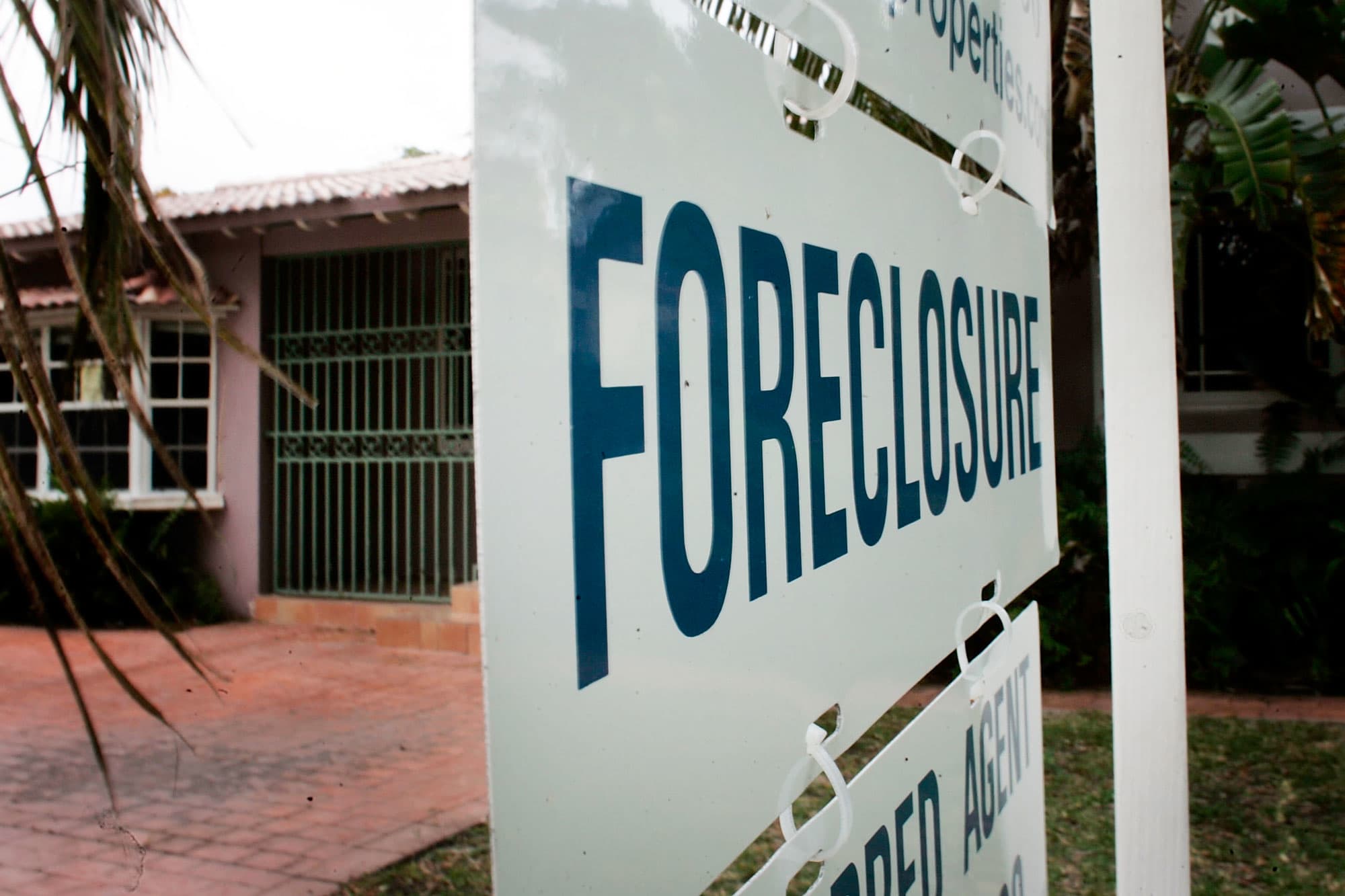Products You May Like
Foreclosures are starting to surge as government and private sector programs designed to help homeowners deal with the economic fallout of the Covid-19 pandemic have begun to expire.
Mortgage lenders began the foreclosure process on 25,209 properties in the third quarter, a 32% increase from the second quarter. On a year-over-year basis, it’s a 67% increase from the third quarter of 2020, according to ATTOM, a mortgage data firm.
While the increases in foreclosures are dramatic, they are coming off extreme lows that were created by the forbearance programs. New foreclosures, also known as starts, usually number around 40,000 per month. They fell to as low as 3,000 to 4,000 in the first year of the pandemic, when forbearance programs were in full force.
Government and private-sector relief programs allowed borrowers with financial difficulties to delay their monthly payments for up to 18 months. The missed payments could then be tacked on to the end of the loan period or repaid when the home was sold or the mortgage refinanced.
States with the largest number of new foreclosures were:
- California: 3,434
- Texas: 2,827
- Florida: 2,546
- New York: 1,363
- Illinois: 1,362
“Despite the increased level of foreclosure activity in September, we’re still far below historically normal numbers,” said Rick Sharga, executive vice president at RealtyTrac, an ATTOM company.
September foreclosure actions were almost 70% lower than they were pre-pandemic. Total foreclosure activity is also still 60% lower than it was a year ago.
“Whether the increase is a prelude to a more serious problem, or just a return to normal levels of foreclosure is one of the bigger debates going on inside the industry right now,” said Sharga.
Large numbers of borrowers are now exiting forbearance programs. The biggest weekly decline so far came last week. The number of borrowers in bailout programs dropped 11% week to week, according to Black Knight, a mortgage data and analytics firm.
The number of active forbearance plans fell by 177,000, led by an 84,000-plan drop among FHA/VA loans. As of Oct. 5, nearly 1.4 million borrowers remained in pandemic-related forbearance plans, representing 2.6% of all active mortgages.
The majority of those coming out of the plans are once again current on their payments. Some of those who aren’t current on their payments are working with lenders on loan modifications. Those who do not contact their lenders or who still cannot afford any payments are either selling their homes or going into foreclosure.
The foreclosure numbers should stay relatively low because of aggressive modifications by lenders and also because of high levels of home equity, due to the recent housing boom and consequently high home prices. Prices were up over 18% year over year in August, according to CoreLogic.
“I think the ‘forbearance cliff’ will be minimal,” said David Stevens, former CEO of the Mortgage Bankers Association and former FHA commissioner in the Obama administration.
“Unlike the Great Recession where home prices dropped approximately 20% from peak to trough, this recession saw home values rise by roughly the same amount. So while we should see some foreclosures, the likelihood is that there will be far fewer from a percentage basis due to the ability to sell a home versus default, or stay in the home due to far better workout options and higher re-employment.”
Foreclosure numbers will likely continue to rise through the end of this year and return to normal levels by the middle of next year, according to Sharga.
“They may then tick up a little higher than usual but still plateau far below the kind of tsunami we saw during the Great Recession by the end of next year,” he added.
